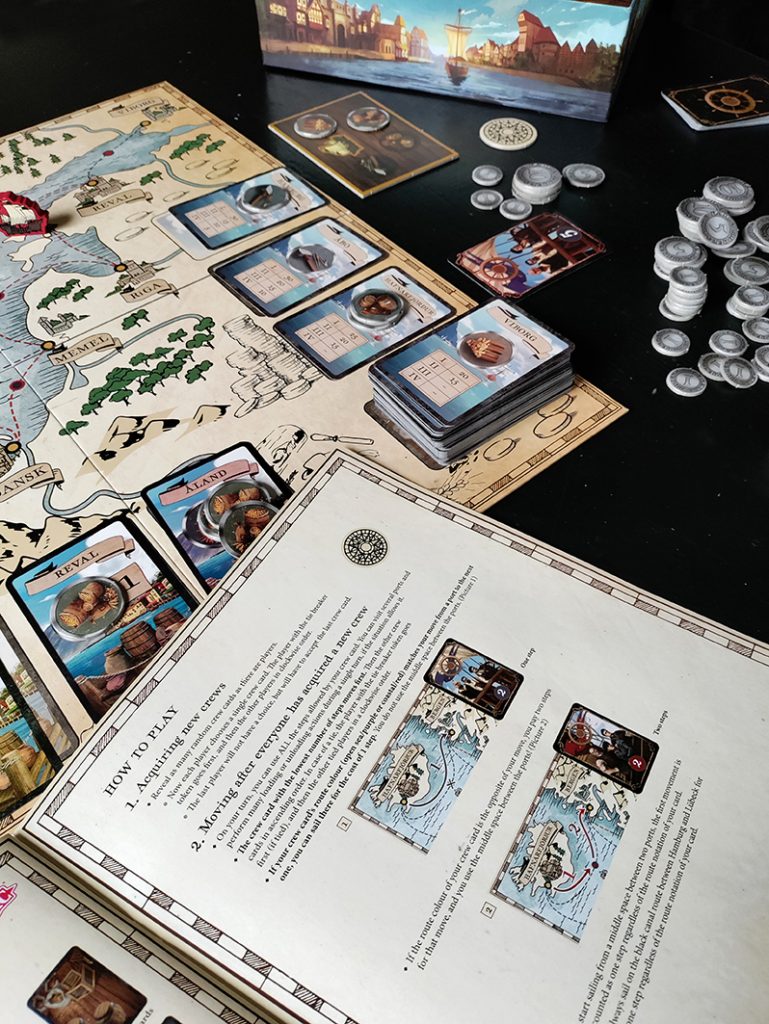Seas of Fortune is a visually beautiful, more of a traditional kind of trading game, where you sail the Baltic Sea and trade grain, wood, weapons, and beer. The game board is an impressive map that looks fitting and true to the era. The wooden chips are also of high quality.
Game testers
- Players: 4
- Time: 40 minutes
- Age: 30+ years
- Expertise: Beginners + Average
The idea of the game is that each of the players gets a ship that can only hold a certain amount of goods. Ships sail along the Baltic Sea from one port to another. Each port has some products for sale and demand for others. Your task is to buy goods cheap and transport them to the highest bidder – before the other players.
The game is easy to learn. At the beginning of each round, players get a crew for their ships – the crew cards are shuffled and dealt. The crew card determines how and where you move on the water; you either move slowly and stop more often on the way, or you sail faster directly from one port to another. Which crew is better depends on where you are heading to. You could go from one end of the map to the other quickly to pick up stuff, but the trip back can be much slower when the crew is changed after a round.



Goods and demand can be found on the cards on the sides of the game board. They change when the cards run out of products. How they change affects which ports start to get crowded very quickly when all the players try to reach the new ports filled with goods.
Tip 1: You’ll get a smoother game if you learn the names and locations of the ports, so you don’t need to spend time looking for them on the board.
Tip 2: It’s best to shuffle the decks properly, so that there will be variability in the goods. At one point, the game got a little stuck when there was only wood available in every port. It is very helpful, though, to be able to see the next goods (that are not yet available) from the top of the deck.
So, you get wealthier by selling goods. It takes 100 silver coins to win the game. That amount started to fill up surprisingly quickly for some players, while the others who were far behind almost ran out of money, even though their ship was full of stuff – just not the right kind. Planning the route well in advance gets you far. Starting turn changes every round which balances the game. Still, luck does play a part in this game.



The flow of the game is logical. Kind of ABC for trading. It all works nicely, if you are a fan of these types of trading games. We didn’t play it too seriously at first and didn’t intentionally harm the other players, even though there were several opportunities to do so. You can play it mean too if you want to.
The crew changes brought variation to the game, almost too often. Sometimes a ship was left sailing far away from all the buzz in the active ports. The 4-player game had a more competitive feel to it when we were all after the same goods and ports. What started out a bit lame got so much better in the end.
Seas of Fortune
Read more about the game here.






